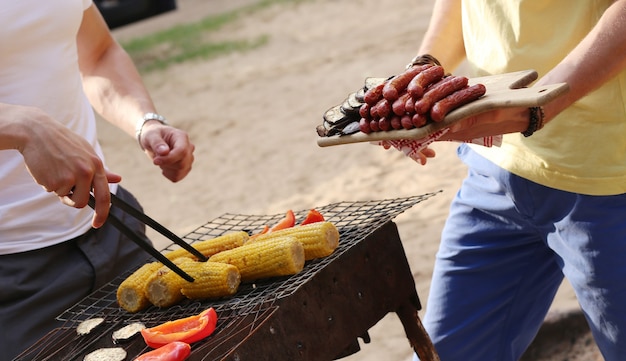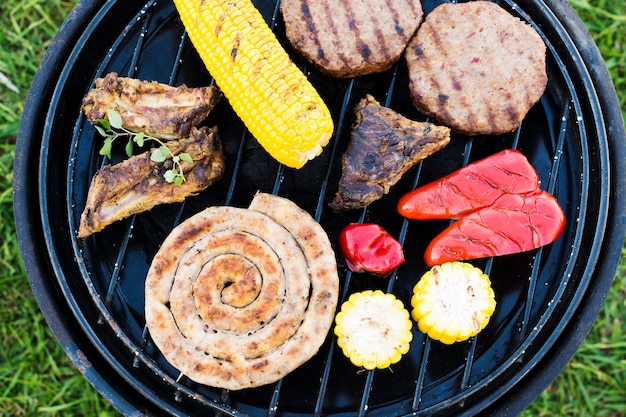Why are my sausages rubbery?
Rubbery sausages can be a disappointing and frustrating experience for any cook. Whether you’re hosting a barbecue, whipping up a quick dinner, or simply enjoying a hearty breakfast, the texture of your sausages plays a crucial role in the overall enjoyment of the meal. So, why exactly do sausages end up rubbery, and what can you do to prevent it from happening?
The Role of Cooking Methods
One of the main culprits behind rubbery sausages is improper cooking methods. Overcooking your sausages can cause them to become tough and chewy, resulting in a rubbery texture. Similarly, undercooking them can leave them raw on the inside and lacking in flavor.
To achieve perfectly cooked sausages with a juicy and tender texture, it’s important to find the right balance. This can be achieved by using the appropriate cooking method and maintaining proper cooking temperatures. Grilling, baking, or frying sausages at medium heat until they are evenly browned and cooked through is generally recommended.
The Impact of Ingredients
The ingredients used in sausages can also have an impact on their texture. A high percentage of fat content is often desirable as it contributes to a moist and succulent texture. Lean sausages, on the other hand, can end up being dry and rubbery.
In addition to fat content, the type of meat used can also affect the texture. Sausages made from leaner meats, such as chicken or turkey, can be more prone to becoming rubbery compared to those made from fattier meats like pork or beef.
The Importance of Proper Storage
Proper storage of sausages is crucial in maintaining their texture and preventing them from becoming rubbery. Storing sausages incorrectly, such as leaving them out at room temperature for too long, can lead to bacterial growth and spoilage.
It’s important to keep sausages refrigerated at temperatures below 5°C (41°F) until they are ready to be cooked. Freezing sausages can also extend their shelf life without compromising their texture, allowing you to enjoy them at a later date.
Preventing Rubbery Sausages
To prevent your sausages from ending up rubbery, here are some tips:
- Choose sausages with an appropriate fat content for the desired texture.
- Opt for cooking methods that allow for even heat distribution and browning.
- Cook sausages at medium heat to ensure they are cooked through without being overdone.
- Properly store sausages in the refrigerator or freezer.
- Experiment with different seasonings and flavors to enhance the overall taste of your sausages.
“The key to perfectly cooked sausages lies in finding the right balance between cooking time, temperature, and ingredients.”
In conclusion, rubbery sausages can be avoided by paying attention to cooking methods, ingredient selection, and proper storage. By following these guidelines, you can ensure that your sausages turn out tender, juicy, and full of flavor every time.
Can you grill sausages on a baking tray?
Grilling sausages is a popular cooking method that produces delicious and flavorful results. While most people associate grilling with using a barbecue or grill pan, you might be wondering if it’s possible to grill sausages on a baking tray. The answer is yes, you can grill sausages on a baking tray, and it can be a convenient alternative when you don’t have access to a grill.
The Benefits of Grilling Sausages on a Baking Tray
Grilling sausages on a baking tray offers several benefits:
- Convenience: Using a baking tray allows you to easily cook sausages in your oven, which is a more accessible cooking appliance for some households.
- Easier Cleanup: When grilling on a baking tray, any grease or drippings from the sausages are captured by the tray, making cleanup simpler.
- Even Cooking: A baking tray provides an even cooking surface, ensuring that the sausages cook through evenly and are not over or undercooked.
“Grilling sausages on a baking tray can be a convenient alternative when you don’t have access to a grill.”
How to Grill Sausages on a Baking Tray
Here’s a simple step-by-step guide:
- Preheat your oven to the recommended temperature specified on the sausage packaging.
- Place the sausages on a baking tray, ensuring they are evenly spaced.
- Cook the sausages in the preheated oven for the recommended time, flipping them halfway through the cooking process to ensure even browning.
- Once cooked, remove the sausages from the baking tray and let them rest for a few minutes before serving.
If you’re looking for some extra flavor, you can also add vegetables or seasonings to the baking tray along with the sausages. This allows them to cook together and infuse flavors.
So, the next time you’re craving grilled sausages but don’t have access to a grill, remember that you can still enjoy the delicious taste by grilling them on a baking tray in your oven!
Should you butterfly sausage?
Sausages are a staple in British cuisine, with various types and flavors available. One technique that has gained popularity among cooking enthusiasts is butterflying sausages. But what does it mean to butterfly a sausage, and is it worth trying? Let’s find out.
What is butterflying?
In culinary terms, butterflying means splitting an ingredient horizontally without cutting it all the way through, resulting in a butterfly-like shape. When it comes to sausages, butterflying involves making a lengthwise incision while keeping the sausage intact.
Butterflying sausages allows for even cooking and faster cooking times. The increased surface area enables the sausage to develop a delicious golden crust while maintaining juiciness inside.
The benefits of butterfly sausage
By butterflying your sausages, you can enjoy several benefits:
- Faster cooking time: Butterflied sausages cook more quickly than whole sausages, making them a convenient option for busy weeknight dinners.
- Enhanced flavor: The increased surface area leads to more caramelization, resulting in a richer and more flavorful sausage.
- Even cooking: Butterflying ensures that the sausage cooks evenly, reducing the risk of undercooked or burnt sections.
How to butterfly sausages
To butterfly a sausage, follow these simple steps:
- Lay the sausage on a cutting board and hold it steady with one hand.
- Using a sharp knife, make a lengthwise incision from end to end, stopping just before cutting it in half.
- Gently open the sausage to reveal the butterfly shape, and it’s ready to cook!
Final thoughts
Butterflying sausages is a technique worth trying if you want to add variety to your meals or simply want a quicker cooking time. The increased surface area enhances flavor and ensures even cooking. Give it a go and enjoy delicious butterflied sausages!



